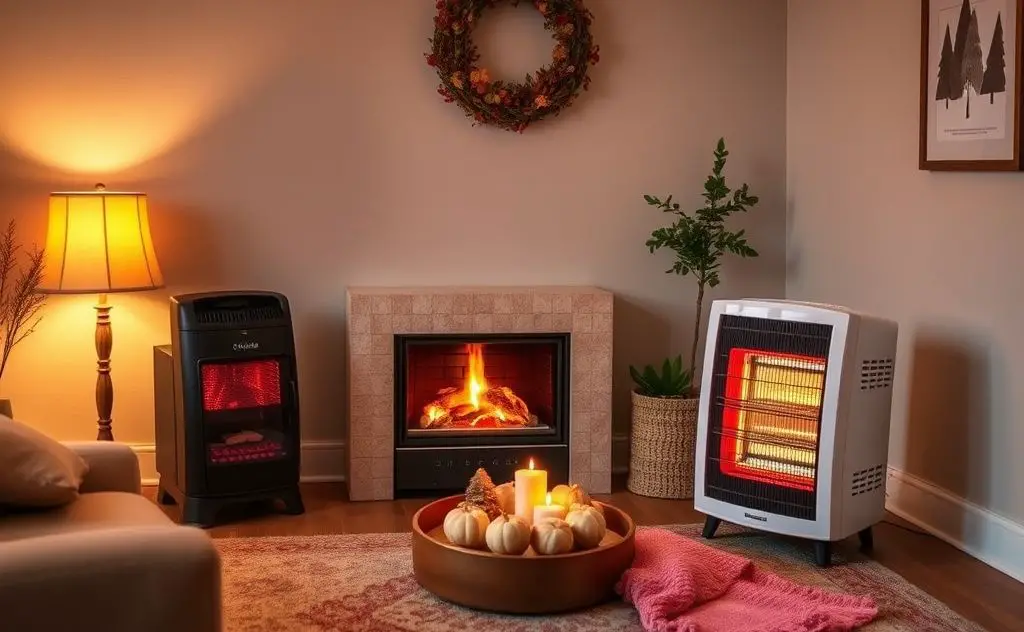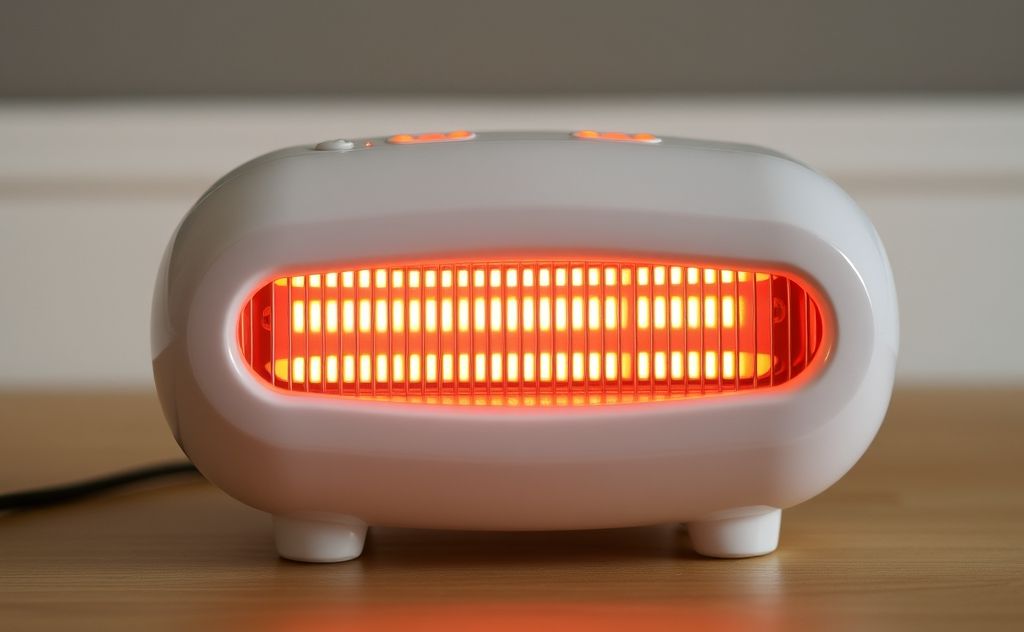Ceramic heaters use electric coils to heat ceramic plates for efficient warmth, while infrared quartz heaters emit infrared radiation to directly warm objects and people, making them ideal for instant heat and larger spaces.
Choosing between ceramic and infrared quartz heaters can be challenging. Both offer unique benefits for different heating needs. This guide breaks down their differences to help you make the right choice.

How Ceramic Heaters Work
Ceramic heaters use a heating element encased in ceramic material. The ceramic absorbs heat and radiates it outward. These heaters typically include a fan to distribute warm air.
Key Features of Ceramic Heaters
- Fast heat-up time (1-2 minutes)
- Quiet operation with fan
- Even heat distribution
- Good for small to medium spaces
For those considering other heating options, oil-filled radiators provide an alternative with steady, long-lasting heat.

How Infrared Quartz Heaters Work
Infrared quartz heaters use quartz tubes to emit infrared radiation. This radiation directly heats objects and people rather than the air. Infrared heating technology works similarly to sunlight, warming surfaces directly.
Key Features of Infrared Quartz Heaters
- Instant heat (no warm-up time)
- Energy efficient (less heat loss)
- Targeted heating capability
- Works well in drafty spaces
Direct Comparison: Ceramic vs Infrared Quartz
| Feature | Ceramic | Infrared Quartz |
|---|---|---|
| Heat Type | Convection | Radiant |
| Energy Efficiency | Good | Excellent |
| Heat-Up Time | 1-2 minutes | Instant |
| Noise Level | Moderate (with fan) | Silent |
| Best For | Small enclosed spaces | Large or drafty areas |
Which Heater is Right For You?
Choose Ceramic If:
- You need quick, even heating in a small room
- Quiet operation is important (models without fans available)
- You prefer warming the air rather than objects
Choose Infrared Quartz If:
- You want immediate warmth without waiting
- Energy efficiency is a priority
- You need to heat specific areas or objects
- Your space has drafts or high ceilings
For those considering gas alternatives, ventless gas heaters offer another heating solution worth exploring.
Safety Considerations
Both heater types are generally safe when used properly:
- Keep flammable materials at least 3 feet away
- Never leave unattended for long periods
- Use surge protectors for electric models
- Follow manufacturer’s instructions carefully
According to Energy.gov, proper placement and maintenance are key to safe heater operation.
Energy Efficiency and Cost
Infrared quartz heaters typically use 10-30% less energy than ceramic models for the same heating effect. The EPA Energy Star program provides guidelines for comparing heater efficiency.
Operating Cost Comparison
- Ceramic: $0.15-$0.20 per hour
- Infrared Quartz: $0.10-$0.15 per hour
Maintenance Requirements
Both heater types require minimal maintenance:
- Ceramic: Clean air filters regularly (if equipped with fan)
- Infrared: Wipe quartz tubes occasionally to maintain efficiency
- Both: Store properly when not in use
Special Use Cases
Best for Garages and Workshops
Infrared quartz heaters excel in drafty spaces like garages because they heat objects directly rather than wasting energy warming air that escapes.
Best for Bedrooms
Ceramic heaters with thermostat controls work well for bedrooms, providing consistent, adjustable warmth throughout the night.
